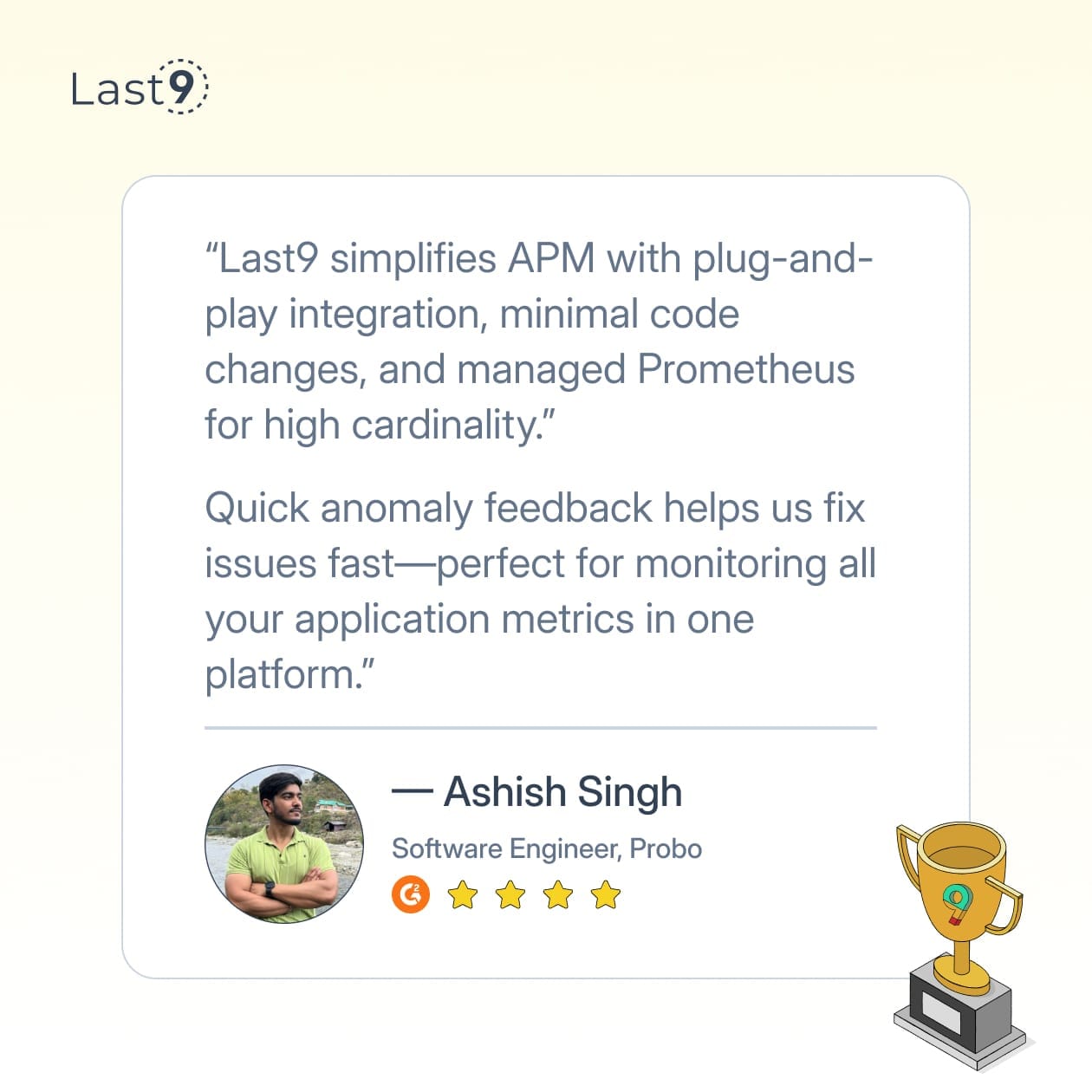If you're dealing with slow MySQL queries and wondering why your database performance is lagging, you're not alone. MySQL performance analyzers are key tools for pinpointing bottlenecks, optimizing queries, and ensuring your databases stay efficient and responsive. Let’s explore how these tools can help you keep things running smoothly.
What Is a MySQL Performance Analyzer?
A MySQL performance analyzer is a specialized tool that monitors, analyzes, and helps you improve your database performance. Think of it as a health tracker for your MySQL databases - it shows you what's working well and what needs attention.
These tools collect data on query execution, resource utilization, and overall database health, then present this information in digestible dashboards and reports. The goal? To help you spot problems before they become disasters.
Why DevOps Engineers Need MySQL Performance Analysis
As a DevOps engineer, you're juggling a million things at once. Database performance might only catch your attention when something breaks. Here's why proactive MySQL performance analysis should be part of your toolkit:
- Prevent downtime: Identify and fix issues before they affect your users
- Optimize resource usage: Get more bang for your infrastructure buck
- Make data-driven decisions: Base your database scaling and optimization on actual usage patterns
- Simplify troubleshooting: When problems do occur, quickly pinpoint their source
Key Metrics to Monitor with a MySQL Performance Analyzer
Your MySQL performance analyzer should track these essential metrics:
Query Performance Metrics
- Query response time: How long queries take to execute
- Slow queries: Queries that exceed the threshold execution times
- Query throughput: The number of queries processed per second
- Query types: Distribution of SELECT, INSERT, UPDATE, and DELETE operations
Resource Utilization Metrics
- CPU usage: How much processing power MySQL is consuming
- Memory usage: Buffer pool utilization, table cache status
- Disk I/O: Read/write operations per second
- Connection stats: Current, maximum, and failed connections
InnoDB Metrics
- Buffer pool efficiency: Hit rate and utilization
- Deadlocks: Frequency and involved tables
- Row operations: Inserts, updates, reads per second
- Transaction metrics: Commits, rollbacks per second
Top MySQL Performance Analyzer Tools for DevOps
Let's check out some tools that can help you master MySQL performance:
1. Last9
If you're searching for a budget-friendly observability solution without performance trade-offs, Last9 deserves your attention. Their event-based pricing model means you'll always know exactly what you're paying for—no surprise bills at the end of the month.
What sets Last9 apart is how it handles high-cardinality data at scale. Companies like Probo, CleverTap, and Replit rely on Last9 for their observability needs. The platform has even monitored 11 of the 20 largest live-streaming events in history—talk about battle-tested!
Last9 works seamlessly with OpenTelemetry and Prometheus to bring your metrics, logs, and traces together in one place. This unified approach means you can correlate issues across your entire stack, not just your MySQL databases, giving you real-time insights with less noise.
Best for: DevOps teams seeking unified observability with predictable pricing and proven scalability

Percona Monitoring and Management (PMM)
An open-source platform built for database performance monitoring, PMM supports MySQL, MongoDB, and PostgreSQL. It offers a unified dashboard that displays real-time metrics, slow query analysis, and system health insights.
With built-in advisors and alerts, it’s a solid choice for managing database reliability at scale.
Best for: Teams that rely heavily on MySQL or MongoDB and want a dedicated, open-source monitoring solution without vendor lock-in.
MySQL Enterprise Monitor
Oracle’s official monitoring tool for MySQL offers deep diagnostics, real-time charts, replication monitoring, and historical performance analysis. It integrates tightly with MySQL Enterprise Edition and is designed to support high-scale, mission-critical deployments, but comes with licensing costs.
Best for: Enterprises already committed to Oracle’s ecosystem and looking for tight integration with MySQL Enterprise Edition.
Prometheus + Grafana
This open-source combo is widely used across modern infrastructure stacks. Prometheus scrapes and stores metrics, while Grafana visualizes them with rich dashboards and alerting.
With mysqld_exporterYou can monitor MySQL metrics alongside your application and system telemetry—all in one place.
Best for: Teams already using Prometheus for infrastructure monitoring and want to extend the same setup to MySQL.
pt-query-digest
Part of the Percona Toolkit, pt-query-digest is a command-line tool that helps you make sense of MySQL query logs. It’s designed for one thing: analyzing slow or expensive queries. Lightweight and effective, it’s ideal for quick diagnostics and pinpointing performance bottlenecks.
Best for: Engineers looking for a no-fuss, targeted approach to understanding slow or expensive MySQL queries.
Here's a comparison of these tools to help you decide:
| Tool | Type | Pricing | Setup Complexity | Real-time Monitoring | Historical Analysis |
|---|---|---|---|---|---|
| Last9 | SaaS | Event-based | Low | Yes | Yes |
| PMM | Self-hosted/Cloud | Free (Open Source) | Medium | Yes | Yes |
| MySQL Enterprise Monitor | Self-hosted | Commercial | High | Yes | Yes |
| Prometheus + Grafana | Self-hosted | Free (Open Source) | High | Yes | Limited |
| pt-query-digest | CLI | Free (Open Source) | Low | No | Yes |
Setting Up Your First MySQL Performance Analyzer
Let's walk through setting up a basic MySQL performance monitoring solution using Percona Monitoring and Management (PMM), a powerful open-source option:
Step 1: Install PMM Server
You can run PMM Server as a Docker container:
docker pull percona/pmm-server:latest
docker create \
-v /opt/pmm-data:/srv \
--name pmm-data \
percona/pmm-server:latest /bin/true
docker run -d \
-p 80:80 -p 443:443 \
--volumes-from pmm-data \
--name pmm-server \
--restart always \
percona/pmm-server:latestStep 2: Install PMM Client on Your MySQL Server
On your MySQL host:
wget https://repo.percona.com/apt/percona-release_latest.generic_all.deb
dpkg -i percona-release_latest.generic_all.deb
apt-get update
apt-get install pmm2-clientStep 3: Connect the Client to the PMM Server
pmm-admin config --server-insecure-tls --server-url=https://admin:admin@<PMM_SERVER_IP>Step 4: Add MySQL Service for Monitoring
pmm-admin add mysql --username=pmm --password=<PASSWORD> --query-source=perfschemaStep 5: Access the PMM Dashboard
Open your browser and navigate to http://<PMM_SERVER_IP>. Log in with the default credentials (admin/admin) and start exploring your MySQL metrics.
DIY MySQL Performance Analysis: Key Commands
While dedicated tools are great, sometimes you need to do a quick check using MySQL's built-in capabilities. Here are some essential commands:
Check Global Status
SHOW GLOBAL STATUS;This gives you a snapshot of your MySQL server's current state, including connection counts, query counts, and buffer usage.
Identify Slow Queries
First, enable the slow query log:
SET GLOBAL slow_query_log = 'ON';
SET GLOBAL long_query_time = 1; -- Log queries taking more than 1 second
SET GLOBAL slow_query_log_file = '/var/log/mysql/mysql-slow.log';Then analyze the log:
mysqldumpslow /var/log/mysql/mysql-slow.logView Currently Running Queries
SHOW PROCESSLIST;Check Table Statistics
SHOW TABLE STATUS FROM your_database;Examine Query Execution Plan
EXPLAIN SELECT * FROM your_table WHERE your_column = 'value';How to Handle MySQL Performance Issues and Fixes
Now that you're monitoring your MySQL performance, you'll likely encounter some common issues. Here's how to fix them:
Slow Queries
Symptoms:
- High query response time
- CPU spikes
- Users complaining about slowness
Fixes:
- Add appropriate indexes based on your EXPLAIN results
- Rewrite complex queries to be more efficient
- Consider denormalizing certain tables for read-heavy workloads
-- Example: Adding an index to speed up searches
CREATE INDEX idx_column_name ON table_name(column_name);Connection Bottlenecks
Symptoms:
- "Too many connections" errors
- Sporadic availability issues
- High thread counts
Fixes:
- Increase max_connections parameter (but be careful not to set it too high)
- Implement connection pooling
- Optimize connection handling in your application
-- Check current limit
SHOW VARIABLES LIKE 'max_connections';
-- Set new limit
SET GLOBAL max_connections = 200;Memory Pressure
Symptoms:
- Swapping
- OOM killer activations
- Decreased query performance
Fixes:
- Optimize buffer pool size
- Tune query cache (or disable it in MySQL 8.0+)
- Right-size your server
-- Check current buffer pool size
SHOW VARIABLES LIKE 'innodb_buffer_pool_size';
-- Set new size (75% of available RAM is often recommended)
SET GLOBAL innodb_buffer_pool_size = 6442450944; -- 6GB exampleDisk I/O Bottlenecks
Symptoms:
- High iowait times
- Slow writes
- Backup operations affecting performance
Fixes:
- Move to faster storage (SSDs)
- Optimize your storage layout (separate data and logs)
- Consider read replicas to offload read operations
Advanced MySQL Performance Tuning Techniques
Once you've mastered the basics, try these advanced techniques:
1. Partitioning Large Tables
Partitioning can significantly improve query performance on very large tables:
-- Example: Partition a table by date range
ALTER TABLE large_logs PARTITION BY RANGE (TO_DAYS(created_at)) (
PARTITION p2023_q1 VALUES LESS THAN (TO_DAYS('2023-04-01')),
PARTITION p2023_q2 VALUES LESS THAN (TO_DAYS('2023-07-01')),
PARTITION p2023_q3 VALUES LESS THAN (TO_DAYS('2023-10-01')),
PARTITION p2023_q4 VALUES LESS THAN (TO_DAYS('2024-01-01')),
PARTITION future VALUES LESS THAN MAXVALUE
);2. Implementing Read/Write Splitting
For read-heavy workloads, set up read replicas and direct read queries to them while keeping writes on the primary server.
3. Query Caching Strategies
While MySQL's built-in query cache is deprecated in 8.0+, you can implement application-level caching using Redis or Memcached.
4. Regular Maintenance Tasks
Schedule these maintenance tasks to keep your MySQL performance smooth:
- Analyze and optimize tables
- Purge old binary logs
- Update statistics
- Audit and clean up unused indexes
-- Regular table optimization
OPTIMIZE TABLE your_table;
-- Update statistics
ANALYZE TABLE your_table;Integrating MySQL Performance Analysis Into Your DevOps Workflow
To get the most from your MySQL performance analyzer, integrate it into your wider DevOps practices:
1. Set Up Automated Alerts
Configure alerts for key performance thresholds so you're notified before small issues become big problems.
2. Include Database Metrics in Your Dashboards
Add MySQL performance metrics to your team's operational dashboards for visibility.
3. Implement Performance Testing in CI/CD
Test database performance as part of your CI/CD pipeline to catch performance regressions early.
4. Document Database Performance Baselines
Establish and document normal performance patterns so you can quickly identify abnormal behavior.
5. Regular Performance Reviews
Schedule regular reviews of your MySQL performance metrics to identify trends and opportunities for optimization.
Conclusion
A good MySQL performance analyzer isn't just another tool in your DevOps kit—it's an essential ally in keeping your applications responsive and your databases healthy.
Whether you choose Last9 for unified observability or an open-source solution like PMM, the important thing is to start monitoring now, not after problems occur.
FAQs
What's the difference between a MySQL performance analyzer and a general database monitoring tool?
A MySQL performance analyzer is specifically designed to understand MySQL's architecture, storage engines, and query optimizer. It provides MySQL-specific insights that general monitoring tools might miss, like InnoDB buffer pool efficiency or query plan analysis.
How much overhead do MySQL performance analyzers add to my database?
Most modern analyzers are designed to add minimal overhead, typically less than 5% in terms of CPU and memory usage. Tools like PMM use efficient sampling techniques to reduce impact.
Can I use a MySQL performance analyzer in production?
Yes, most performance analyzers are designed for production use. Just be careful with query analyzers that might log all queries, as this can add overhead in high-throughput environments.
How frequently should I check my MySQL performance metrics?
Set up continuous monitoring with dashboards showing real-time and historical data. Review detailed metrics at least weekly, and set up alerts for immediate notification of critical issues.
Do I need a different analyzer for MySQL 8.0 vs. older versions?
Most analyzers support multiple MySQL versions, but check compatibility. MySQL 8.0 has different performance schema tables and removed the query cache, so your analyzer should account for these differences.
Can MySQL performance analyzers help with capacity planning?
Absolutely! By tracking historical performance data and growth trends, performance analyzers can help you predict when you'll need to upgrade hardware or scale your database infrastructure.



